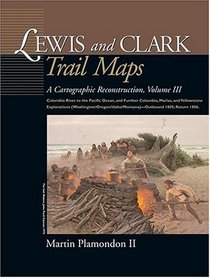Search -
Lewis and Clark Trail Maps: A Cartographic Reconstruction (Cartographic Reconstruction)
Lewis and Clark Trail Maps A Cartographic Reconstruction - Cartographic Reconstruction
Author:
Maps cover: Columbia River to the Pacific Ocean, and Further Columbia, Marias, and Yellowstone Explorations (Washington/Oregon/Idaho/Montana)–Outbound 1805; Return 1806 After crossing the Bitterroot Range and canoeing down the cataract-filled Snake River, the Corps of Discovery finally reached the long-sought Columbia River in the autumn o... more »
Author:
Maps cover: Columbia River to the Pacific Ocean, and Further Columbia, Marias, and Yellowstone Explorations (Washington/Oregon/Idaho/Montana)–Outbound 1805; Return 1806 After crossing the Bitterroot Range and canoeing down the cataract-filled Snake River, the Corps of Discovery finally reached the long-sought Columbia River in the autumn o... more »
ISBN-13: 9780874222654
ISBN-10: 0874222656
Publication Date: 5/2004
Pages: 243
Rating: ?
ISBN-10: 0874222656
Publication Date: 5/2004
Pages: 243
Rating: ?
0 stars, based on 0 rating
Publisher: Washington State University
Book Type: Hardcover
Members Wishing: 1
Reviews: Amazon | Write a Review
Book Type: Hardcover
Members Wishing: 1
Reviews: Amazon | Write a Review
Genres:
- History >> Americas >> United States >> 19th Century >> General
- History >> Americas >> United States >> 19th Century >> Old West
- History >> World >> Expeditions & Discoveries
- Reference >> Atlases & Maps >> Atlases & Gazetteers
- Reference >> Atlases & Maps >> Travel Maps




